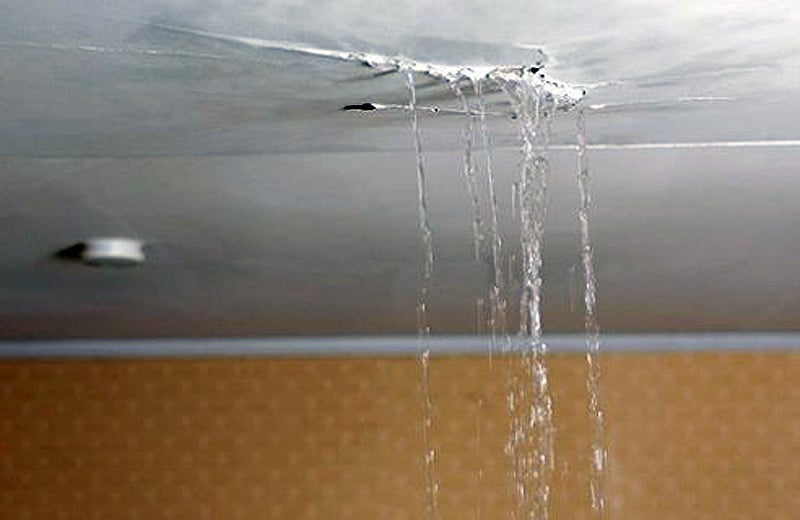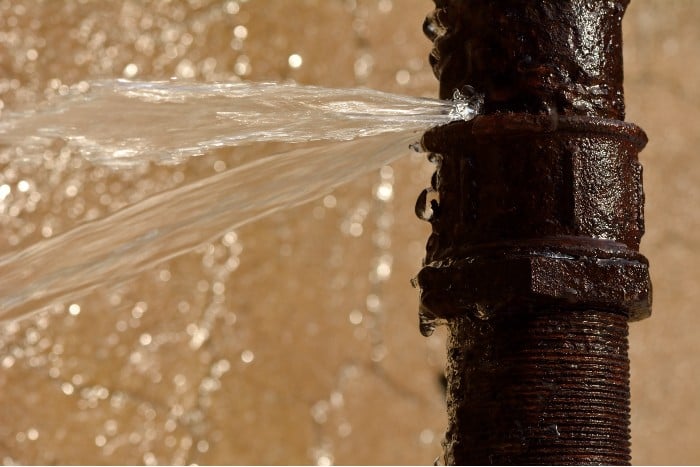What're your opinions about How to detect water leaks in your home?

Leaks not only cause waste of water however can likewise create unnecessary damages to your residence and also advertise unwanted organic development. Water leaks may go undetected considering that many of the pipework in our home is concealed. By looking and also understanding for day-to-day situations that create leaks, you can safeguard your house from future leaks and unneeded damage. Today, we will certainly look at 6 leakage causes that may be triggering your pipelines to leak.
Instant temperature level adjustments.
Severe temperature adjustments in our pipelines can create them to expand as well as acquire suddenly. This development and contraction might trigger fractures in the pipelines, particularly if the temperature are below freezing. It would be best if you kept an eye on how your plumbing functions. The presence of the previously pointed out scenarios frequently indicates a high threat.
Corroded water supply
As time goes by, your plumbing system ages and deterioration such as rust might begin eating away the pipelines. This may be the source of staining or warping on your pipes. This asks for an assessment with your plumber immediately. Take into consideration changing the pipelines since they are at a greater threat of deterioration than the more recent models if our plumbing system is old.
Malfunctioning Pipe Joints
The factor at which your pipelines attach is regularly the weakest link in the waterline. Pipe joints can weaken in time, causing water leakages. The bulk of pipeline joints are not quickly noticeable. If you have noisy pipelines that make ticking or banging noises, especially when the warm water is turned on, your pipe joints are probably under a great deal of stress. It is suggested to have your plumber evaluate your system once a year.
Encroaching origins
Many water leakages start outside the house as opposed to inside it. If you see an abrupt decrease in water pressure, claim in your faucet, take some time to go out as well as examine your backyard. You may observe wet spots or sinkholes in your yard, which may suggest that tree origins are getting into water lines triggering water to leak out. You can have your plumber look for invasion, specifically if you have trees or bushes near your building.
Poor Water Connectors
Sometimes, a leakage can be triggered by loosened pipes as well as pipes that supply your devices. More often than not, changing is what creates the loosened water Links. You could discover in the case of a washing maker, a hose might spring a leak due to drinking during the spin cycle. In case of a water links leak, you may observe water running straight from the supply line or pools around your devices.
Clogged Drains
Blocked drains pipes might be frustrating as well as inconveniencing, yet they can sometimes end up creating an overflow causing break pipelines. Keep eliminating any products that may go down your drains that might block them to prevent such aggravations.
All the above are root causes of leakages however not all water leakages arise from plumbing leaks; some leakages might come from roof leaks. All leaks must be repaired promptly to avoid water damages.
Leakages not only cause waste of water but can also cause unneeded damages to your home and promote undesirable organic development. By looking and also recognizing for daily circumstances that create leaks, you can safeguard your home from future leakages and also unnecessary damage. Today, we will certainly look at 6 leak creates that may be triggering your pipes to leak.
At times, a leakage can be caused by loose hose pipes as well as pipes that provide your appliances. In instance of a water connections leak, you may notice water running straight from the supply line or pools around your home appliances.
How To Check For Water Leak In Your Home
How To Check for Leaks
The average household's leaks can account for nearly 10,000 gallons of water wasted every year and ten percent of homes have leaks that waste 90 gallons or more per day. Common types of leaks found in the home are worn toilet flappers, dripping faucets, and other leaking valves. These types of leaks are often easy to fix, requiring only a few tools and hardware that can pay for themselves in water savings. Fixing easily corrected household water leaks can save homeowners about 10 percent on their water bills.
To check for leaks in your home, you first need to determine whether you're wasting water and then identify the source of the leak. Here are some tips for finding leaks:
Take a look at your water usage during a colder month, such as January or February. If a family of four exceeds 12,000 gallons per month, there are serious leaks.
Check your water meter before and after a two-hour period when no water is being used. If the meter changes at all, you probably have a leak.
Identify toilet leaks by placing a drop of food coloring in the toilet tank. If any color shows up in the bowl after 10 minutes, you have a leak. (Be sure to flush immediately after the experiment to avoid staining the tank.)
Examine faucet gaskets and pipe fittings for any water on the outside of the pipe to check for surface leaks.
Undetected water leaks can happen without the home or business owner even realizing. If you suspect a water leak, but not able to find the source. It is time to contact a professional water leak detection service, The Leak Doctor.
How To Find a Water Leak In Your Home
https://www.leakdoctor.com/blog/How-To-Check-For-Water-Leak-In-Your-Home_AE197.html

We hope you enjoyed reading our part about How to detect water leaks in your home. Thank you for finding the time to read our blog post. Are you aware of anybody else who is fascinated by the subject? Take a moment to promote it. I am grateful for your time. Please come visit our website back soon.
The right fix? Ring!